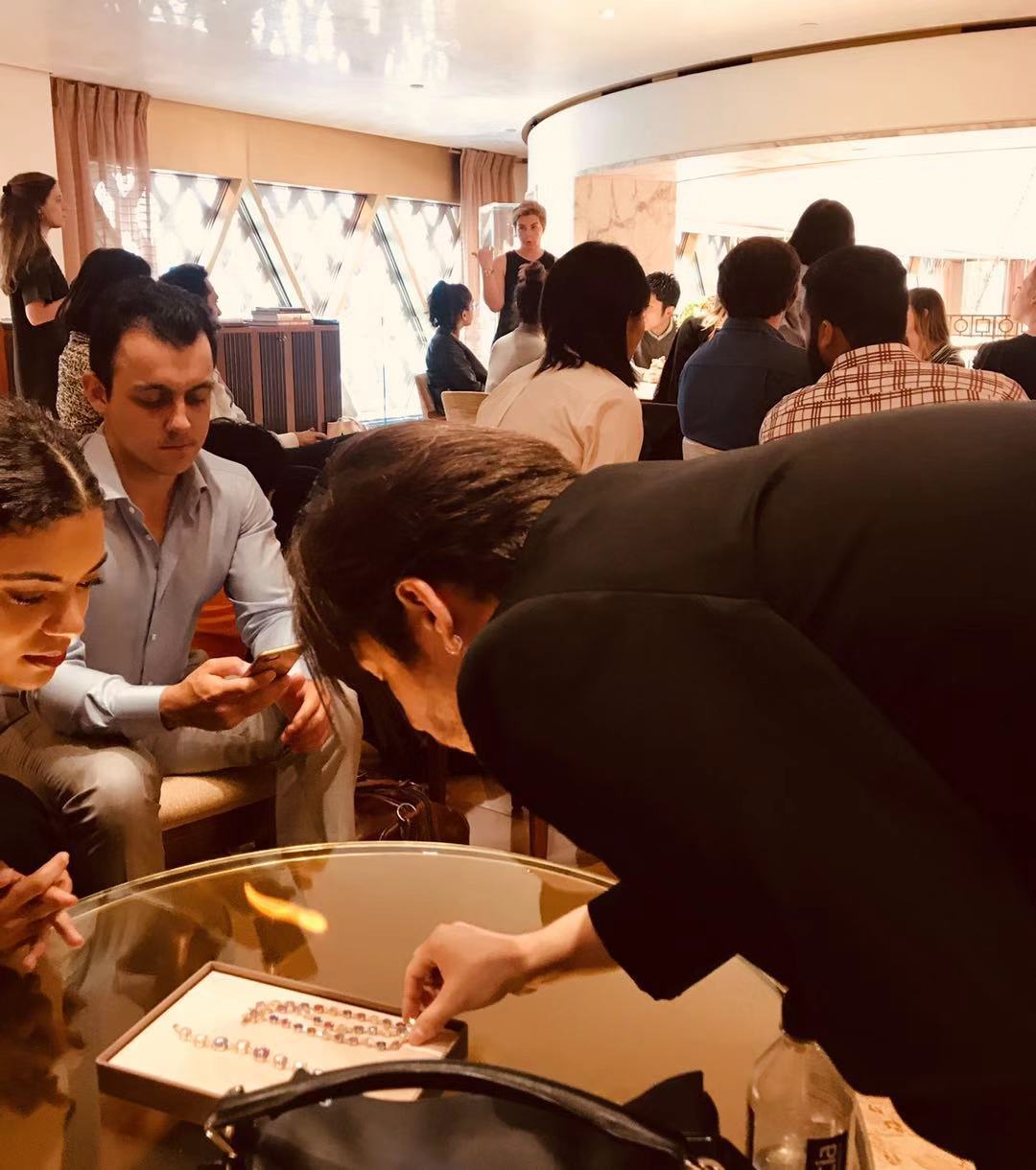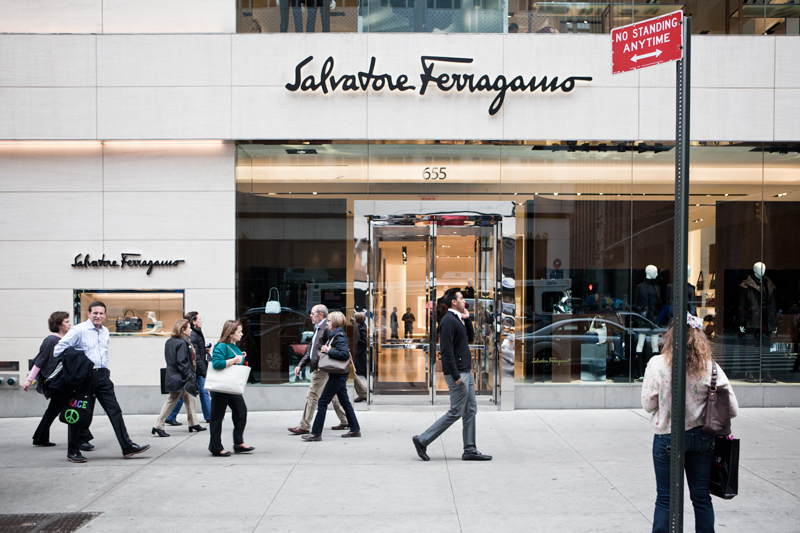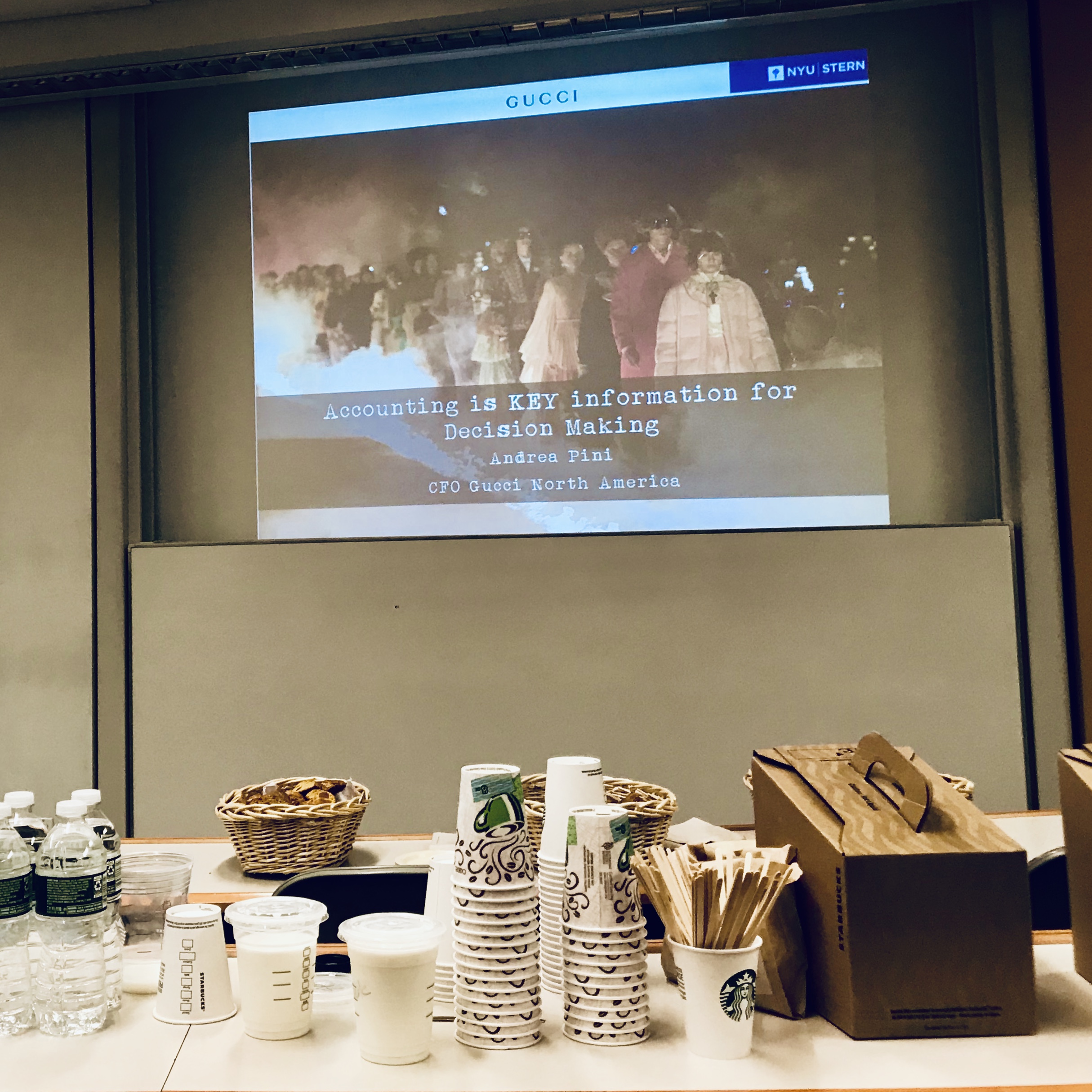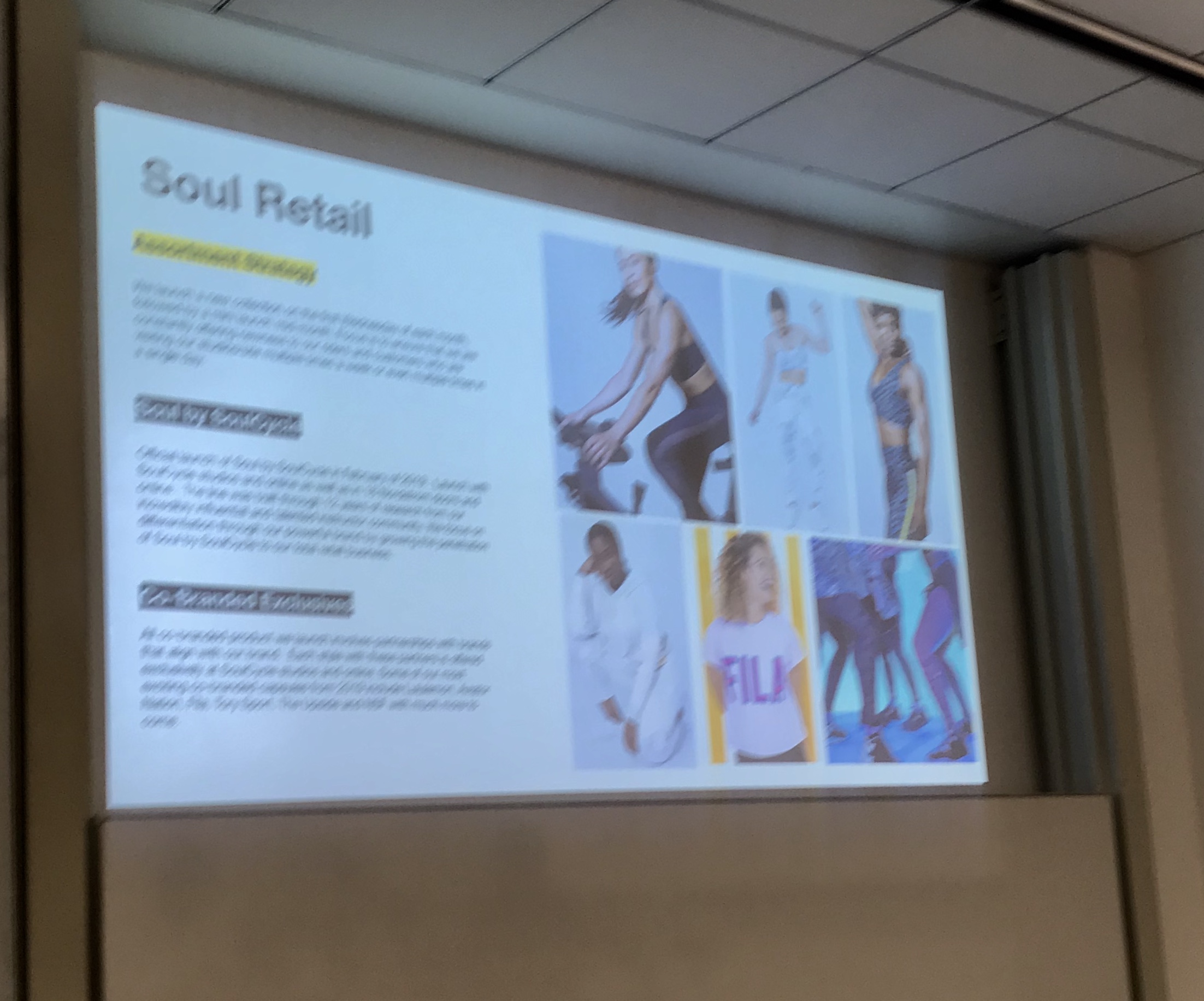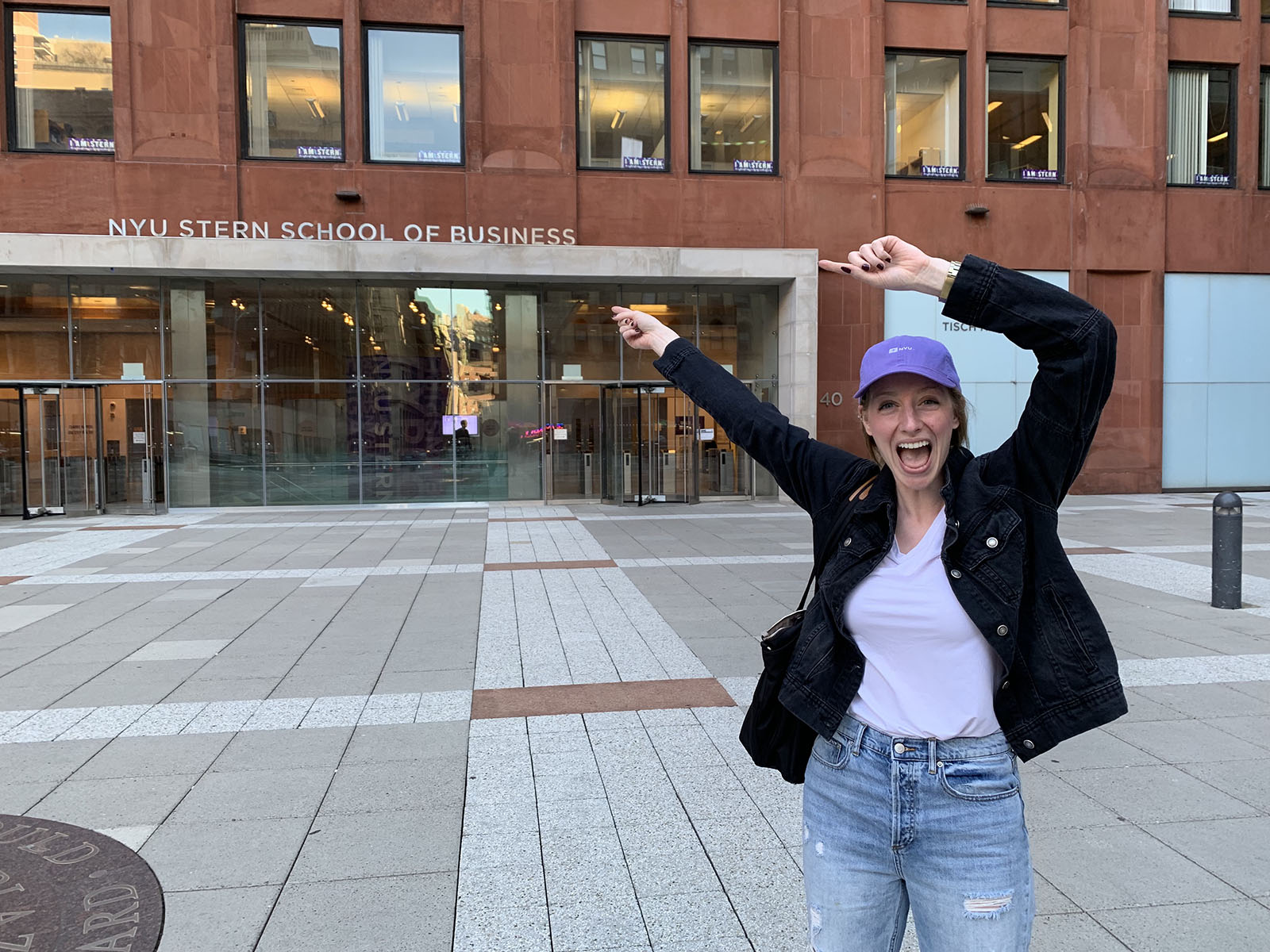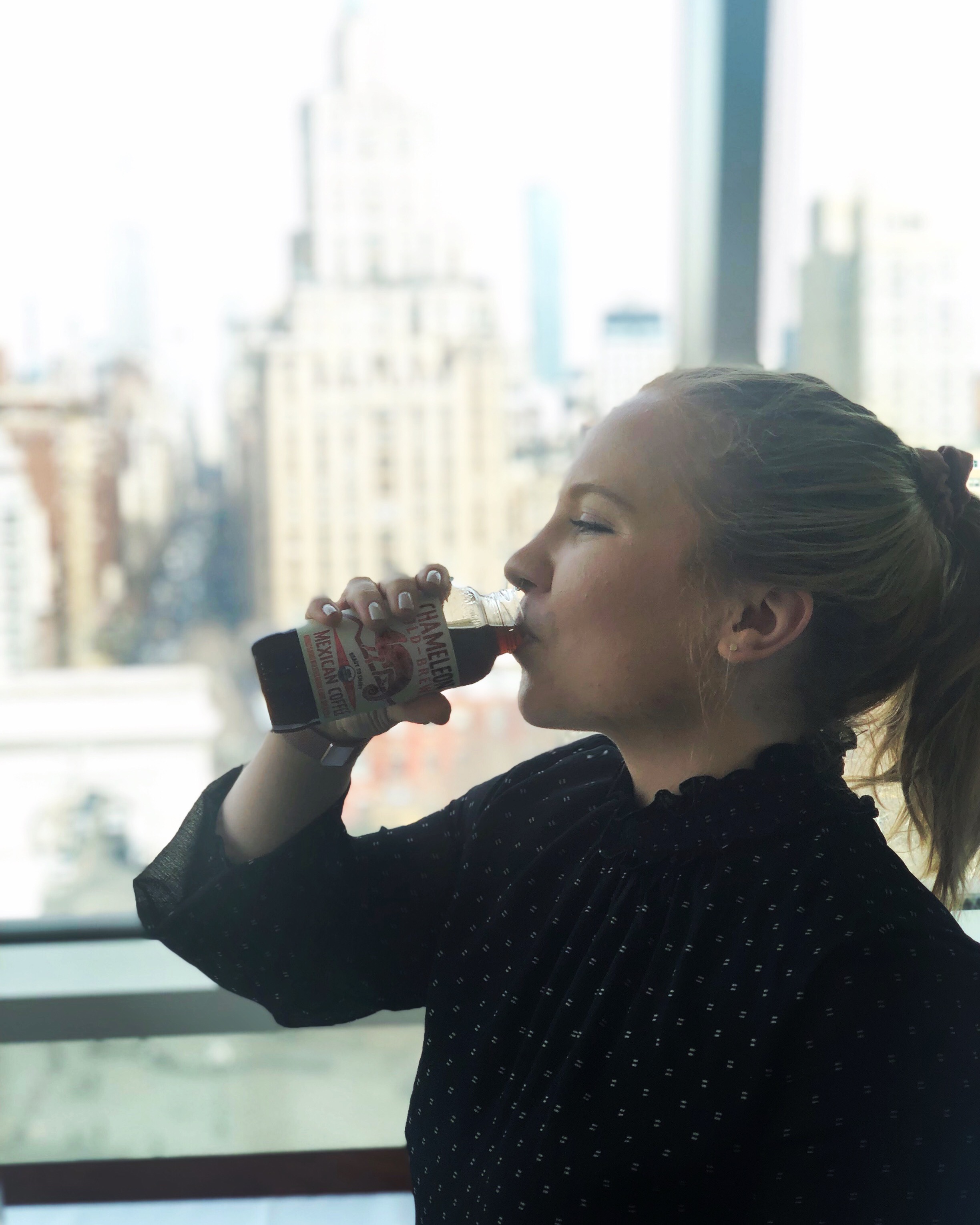After leaving Milan, we flew to Paris and experienced amazing food, culture, and learning. Just like Milan, there was no shortage of excellent dining options. The first night we arrived there, some of us went to dinner at a French restaurant called Bistrot Victoires, and a two-course meal with about half a bottle of wine per person was about 20 euros! Despite the transit strikes that were going on in Paris, there was no issue getting around. Paris is a very beautiful and walkable city, which we took advantage of by walking everywhere.
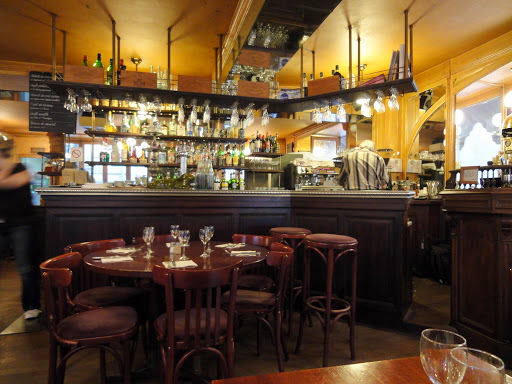
Visiting Hermes
The visit to the Hermes store was amazing for a variety of reasons:
1. The store’s architecture is absolutely stunning. 2. The craftsmanship and quality of the items in the store are unparalleled. 3. The Hermes Birkin & Kelly Bags. We learned the rich history behind the Birkin and Kelly bags and the amount of time that goes into their creation. It still amazes me that the bags can retail for +$100,000. Unlike most stores, the Hermes we visited in Paris is appointment-only and has average volumes of around 2,000 visitors per day. Sadly there was no NYU Stern discount offered for students 😉
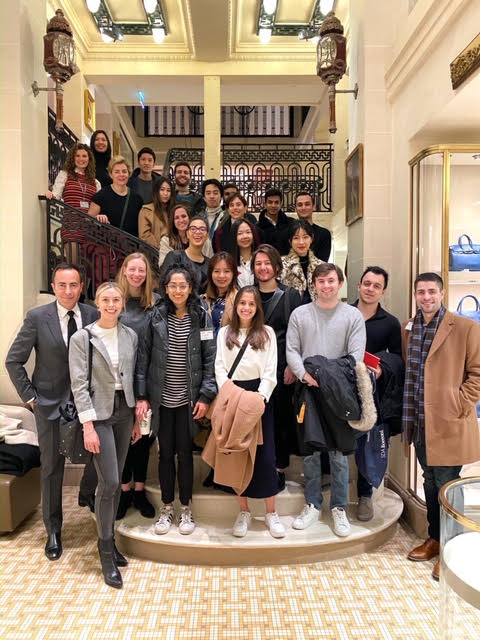
We were walking on our way to the Hermes store and could not help but notice the beautiful architecture and decorations throughout the streets.
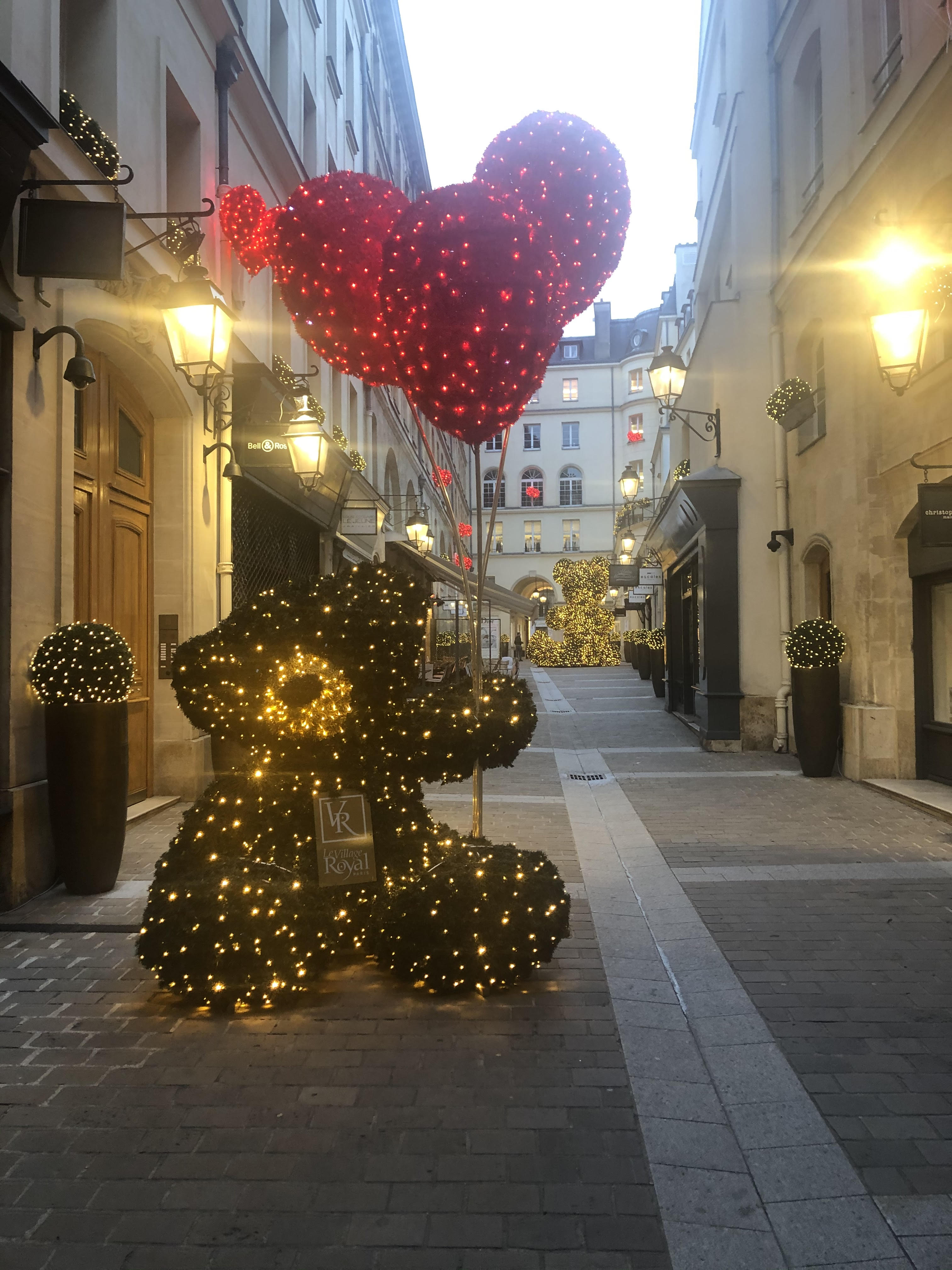
Guerlain: Luxury perfume
The visit to Guerlain was another eye-opening experience. This Guerlain parlor was located on the Champs-Elysees, one of the most beautiful shopping areas in all of Paris. No different than Hermes, this store was also stunning. As soon as you walked in, you were shown high-end fragrances. A store manager was kind enough to give us a tour and brought us upstairs, where bespoke scents are created for luxury clientele. These scents could cost the customer thousands of dollars. The upstairs parlor was similarly exquisitely crafted and made you feel as if you were transported to another world.
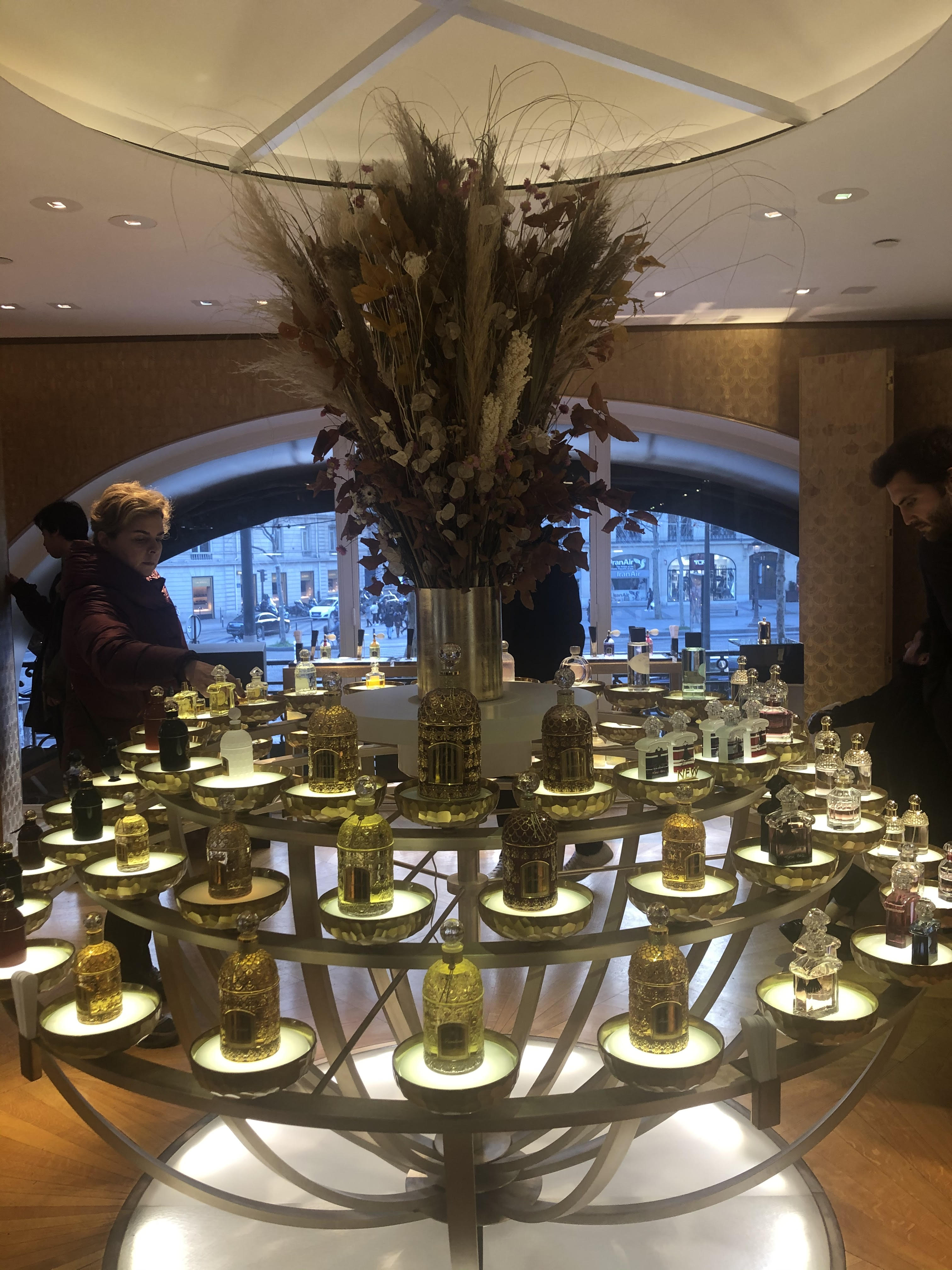
Versailles
On our final day in Paris, we were given the option to be able to explore the city independently or visits Versailles on the outskirts of Paris. Having already visited Versailles, I knew how beautiful it was; however, I knew that the gardens (which are much bigger) are also a sight to see on their own (even in January). Rather than spend our time enjoying the interior of Versailles, we decided to spend two hours walking through the gardens, and we barely scratched the surface! Lucky for us, the weather was about 45 Fahrenheit, which made it optimal walking weather.

Between Milan and Paris, the international immersion was a wonderful trip that I will remember for the rest of my life!
